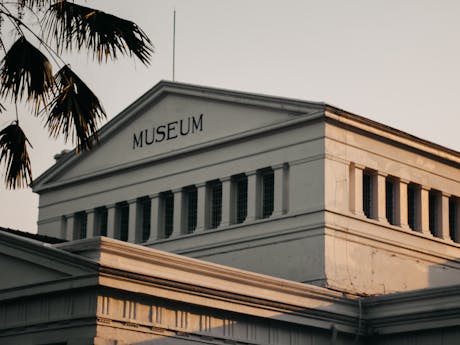The BEST Museums of the Costa Brava
A holiday on the Wild Coast undoubtedly means plenty of time on the sandy beaches, tasting delicious new foods and experiencing the beautiful cities this region has to offer. But to truly encounter the Costa Brava culture, museums are a must. Indulge in the arts, examine the archaeology, analyze the history, research the sciences, understand the culture and learn through interpretation. Discover the past, the present and the future of the Wild Coast of Spain!



Visual Arts
- El Museu d’Art de Girona: The Museum of Art was founded in 1976, originally showcasing the sum of two impressive collections. Present day, the art museum has over thirteen thousand catalogued works and counting. Museu d’Art de Girona houses works from various periods, such as Romanesque, Baroque, Gothic and Renaissance, along with more recent works from the 19th-21st centuries.
- D’OR Museum: The DOR Museum of La Fortaleza is dedicated to the fine works of jewelry and art. Don’t miss out on the crafts, silverware and gemology, as well as exhibitions of contemporary designer jewelers.
- Dalí Theatre and Museum: Not only is this museum the largest surrealist object in the world, but also the final resting place for the famous surrealist artist, Salvador Dalí. Truly spectacular architecture and complete masterpieces inside. A bucket list destination for any art connoisseur.
- Espai Carmen Thyssen: The Carmen Thyssen Space has become an artistic point of reference in the Costa Brava, with works from all over the globe. This centre is for temporary exhibitions, with famous masterpieces in and out of the museum every year.
- The Museum of Watercolor by the J. Martínez Lozano Foundation: This public collection of almost 200 watercolor pieces was created in 1989 by the artist J. Martínez Lozano. Guided tours are available for groups.
- Raset Museum of Modern Art: The Raset Museum is housed in a remarkable 13th century manor home, with a focus on the modern arts of mainly Spanish and Catalan paintings. A particularly impressive exhibit is the '100 Years of Modern Still Life Painting', which exhibits distinct artistic approaches on original still life paintings.
History
- Museu Memorial de l’Exili: The Exile Memorial Museum is an interpretation centre that remembers the exiles brought about the Civil War in Spain and Catalonia. This educational experience combines both temporary and permanent exhibitions to promote awareness and insight.
- Maritime Museum - Can Garriga: Partake in an authentic trip through the history of Lloret and its links to the sea, a route that goes from the coastal trading in the Mediterranean to the great deep-sea sailing across the Atlantic.
- Peralada Castle: Peralada Castle is an artistic, intricate construct. Built in the 14th Century by the Viscounts of Rocabertí after the first fort located at the highest point of the original town centre, Castro Tolon. The town was destroyed in 1285 during the crusade against Catalonia under the command of the French King Philip the Bold. The Peralada Castle was the main residence of the Rocabertí family until the 19th Century, when they moved to Paris.
- 14th Century Medieval History Museum of the Curia-Prison: The museum is a Gothic building that was constructed in around 1336 in the time of Infante Pere I (1325-1342). The building fulfilled two functions of the mediaeval town, containing both the curia (judicial headquarters of the town of Castelló d’Empúries) and the prison.
- Museum of Count Arnau: This museum in Gombrèn (housed in the town's culture centre) displays archaeological, literary, mythological and historical artefacts related to the castle and the Mataplana dynasty.
- Rack Railway Museum: This museum exhibits some of the engines and wagons used on the Núria rack railway. This machinery is no longer in use, but serves to explain the history of the Núria rack railway.
Archaeology
- Museu d’Arqueologia de Catalunya - Empúries: Before the Mediterranean Sea, a natural site of exceptional beauty, lie the ruins of Empúries. This location is the largest Greco-Roman archaeological site in Catalonia.
- Museu Arqueològic de Banyoles: The archaeological remains found in the surroundings were kept in the city of Banyoles. The museum boasts three rooms for the permanent exhibition: the Paleontology, the Prehistory and the History Hall.
- The Citadel of Roses - Cultural Centre: An archaeological bay with 3000 years of history. Roses is a town with a Mediterranean essence and a marked tourist and seafaring tradition.
- Museu d’Arqueologia de Catalunya - Ullastret: The Iberian settlement of Puig de Sant Andreu in Ullastret is the largest in Catalonia and is currently considered a real city. It was the capital of the Iberian tribe that ancient authors call “indigets”. The first settlement was continuously populated in the beginning of the Iron Age, the end of the seventh century BC, with the only known archaeological materials of human occupation.
- The Monastery of Sant Pere de Galligants: From 1857, Sant Pere de Galligants was used as a museum of archaeology and fine arts, one of the oldest in Catalonia. Currently it is the headquarters of the Girona branch of the Museum of Archaeology of Catalonia and includes the archaeological materials found in the excavations of several sites in the Girona region, from prehistory to the Middle Ages.
- The Espai Ceretània Museum of Archaeology: The Espai Ceretània is the center for the diffusion of the archaeological heritage of Castellot de Bolvir, one of the few Iberian settlements located in the Pyrenees and the most important of the Ceretània found today.
- Can Saragossa - Museum of Iberian Archaeology: The history of Can Saragossa farmhouse follows the rhythm of the history of the town of Lloret. It was originally one of the oldest farmhouses in the town. It is currently home to the permanent exhibitions of Iberian archaeology.
Science and Technology
- Museu dels Volcans: The permanent exhibition of the Volcano Museum focuses on the presentation of the physical environment of the Garrotxa, emphasizing on seismic and volcanological phenomena, as well as the main ecosystems of the region.
- Museu de la Tècnica de l'Empordà: The industrial revolution changed our way of life. During that time, scientific and technical progress brought about typewriters, telephones, automobiles and more. A visit to the Technology Museum of l'Empordà is the ultimate experience of this period.
- The Castelló d'Empúries Flour Mill and Eco-Museum: This museum was originally a factory that was open from the late 19th century and during the first half of the 20th century, built on the remains of three medieval flour mills. The Museum opened to the public in 1998, following a renovation carried out by the municipality.
- The Cinema Museum - Tomàs Mallol Collection: The Cinema Museum - Tomàs Mallol Collection is a museum dedicated to the world of film and moving images. It was created in the city of Girona from the Tomàs Mallol Collection of pre-cinema and cinema objects, which was acquired in 1994 by the City Council of Girona.
Interpretation Centres
- Santa Catalina Lighthouse: Thanks to the technological resources available at the Santa Catalina Lighthouse, visitors will be able to learn the basic principles of navigation, which take their roots in ancient times.
- Fish Interpretation Centre (MARAM): Located in a unique setting of the fishing port, the MARAM offers you the chance to learn more about the lives of the fishermen, their boats and their gear. Other attractions such as the auction, the boats, and the fishermen mending nets complement the centre.
- The Interpretation Centre of Count Arnau: Count Arnau is one of the mythical symbols of Catalonia, inseparably linked to Sant Joan de les Abadesses and also focused on other parts of the region. The Interpretation Center wants to give the keys to understand the origin and evolution of the figure of Count Arnau from a perspective that covers folklore, history, music and literature.
- Montseny Space of Tales and Legends: A spectacular and thought-provoking visitors’ centre to delve into tales and legends of witchcraft and banditry. The Montseny Space is an evocative centre, which immerses us in a magical ambience, replete with thrilling image projections and surround sound.
- Montgrony Interpretation Centre “Year 0”: The Montgrony Interpretation Center Year 0 takes us into the history of Otger Cataló, one of the transcendental characters of the origins of Catalonia. With an audiovisual and interactive museography, the centre portrays more than a thousand years of the origins of Catalonia.
Specialty Museums
- Anchovy and Salt Museum: The Museum of Anchovies and Salt portrays the history of fishing in the sixteenth century forward, as well as the salting practice in this classic Catalonian delicacy.
- The Cork Museum: The Cork Museum is located in an old cork factory, the most important of the industrial sector in Spain. It acquires, preserves, interprets and enhances the vertebrate heritage around the world of cork in Catalonia.
- The Toy Museum of Catalonia: The Toy Museum of Catalonia was created from the personal collection of Josep Maria Joan Rosa and Pilar Casademont Sadurní. The collection at the Toy Museum of Catalonia consists mainly of industrial toys and games dating from the end of the 19th century until today.
- Micromundi - The Museum of Miniatures: Here you’ll find over 2000 miniature pieces of all types. Take a peek at a camel caravan in the eye of a needle, a collection of jewels on top of an apple seed or even the Eiffel tower standing on a poppy seed.
- The Trias Biscuit Museum: The Trias Biscuits are a classic treat in Catalonia. Explore the industrial heritage of the cookies and biscuits as well as taste testing some of the delicious treats!